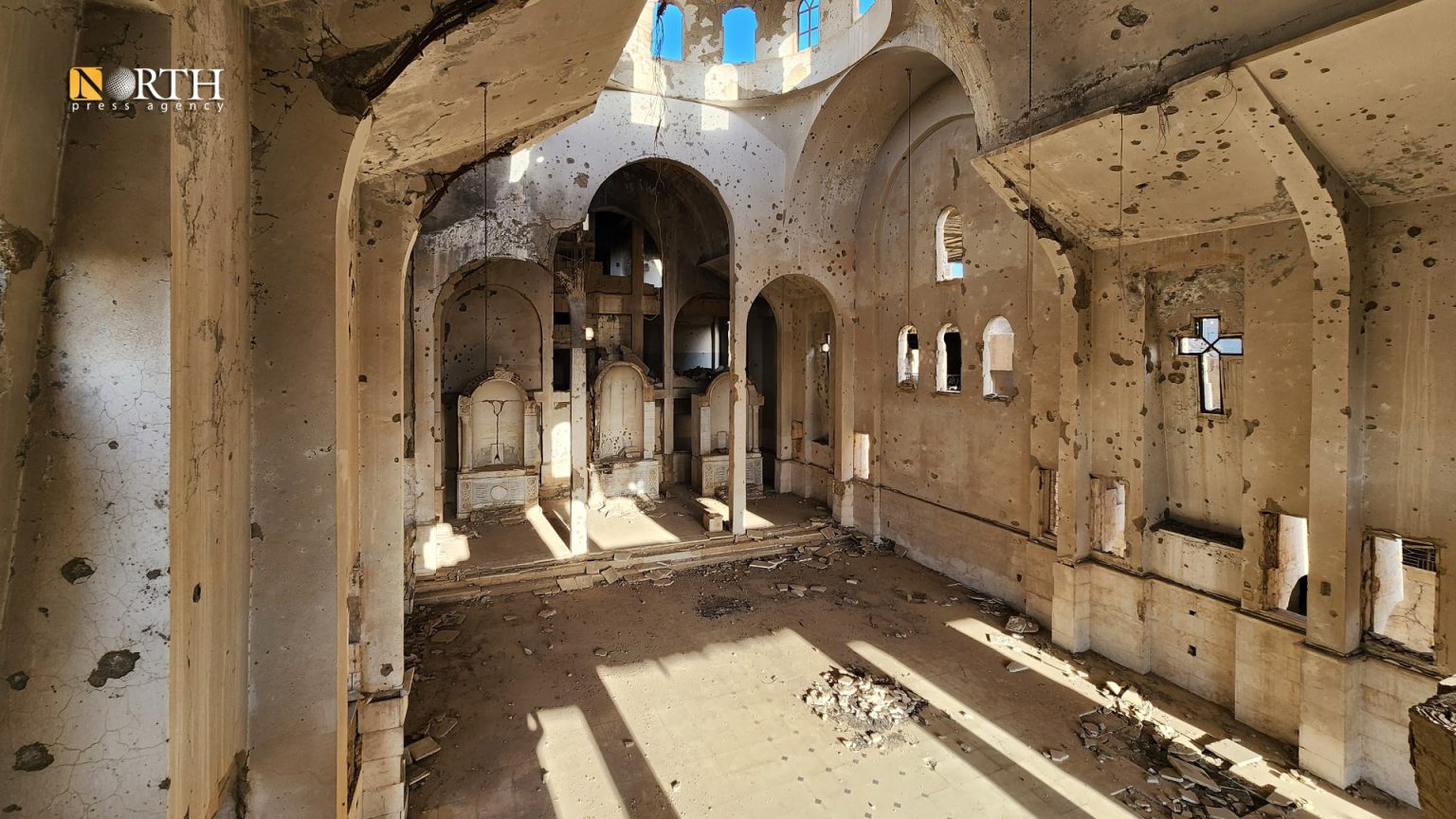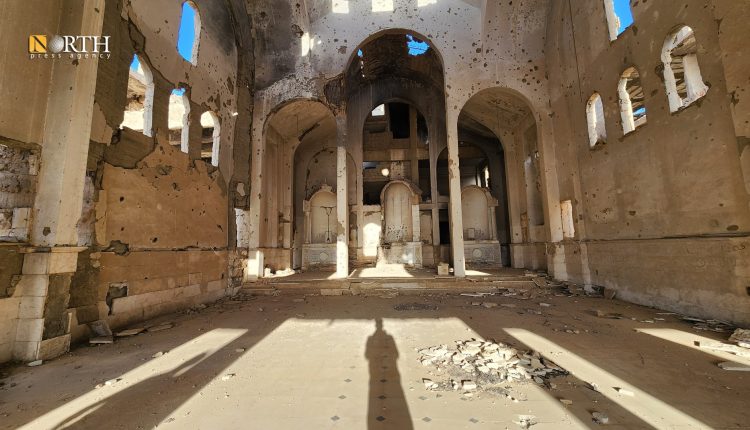By Hussam Shahin
DEIR EZ-ZOR, Syria (North Press) – Years after war forced their displacement, the Christian community of Deir ez-Zor remains largely absent, leaving behind shattered churches, fractured memories, and neighbors still mourning their departure.
Mohammad al-Jadaan, a lifelong resident of the eastern Syrian city of Deir ez-Zor, told North Press that the city, once known for its religious diversity and social cohesion, has become “bereft of its Christian families, who lived side by side with their Muslim neighbors—sharing joys and sorrows alike.”
The Christian presence in Deir ez-Zor dates back centuries, predating even the French mandate over Syria. “Christians and Kurds lived here for more than a hundred years before the French entered Syria. We lived as brothers,” al-Jadaan recalled.
The city’s very name—“Deir,” meaning monastery—speaks to its Christian heritage, he added. “They are not guests in this region. Their roots run deep in the history of this land.”
In the neighborhood of al-Rushdiyya, he remembers Muslim and Christian mothers nursing each other’s infants in a longstanding tradition of shared care, reflecting the deep intercommunal bonds that once defined the city.
A city of churches—now in ruins
Before the war, Deir ez-Zor was home to five churches: the Armenian Martyrs Church (Armenian Orthodox), the Church of the Virgin Mary (Syriac Orthodox), the Armenian Catholic Church, the Church of Christ the King (Capuchin Fathers), and the Syriac Catholic Church. These churches stood in the central neighborhoods of al-Qusour and al-Rushdiyya.
The Armenian Martyrs Church, in particular, was a symbolic site. Built in 1989, it housed the remains of victims of the Armenian Genocide and featured the “Column of Resurrection,” a monument containing relics of those killed.
However, much of this legacy was wiped out during the war. Syrian regime forces shelled neighborhoods that had fallen out of their control, inflicting major damage on Christian sites. What remained was later destroyed by ISIS, which detonated explosives in the churches and looted their contents. Local residents report that statues, paintings, sacred texts, and icons were stolen or burned before the buildings were demolished.

A Community scattered
According to a Christian resident of the city who spoke anonymously, the majority of Christians in Deir ez-Zor belonged to the Syriac Orthodox Church, followed by the Chaldeans, Armenian Orthodox, and Armenian Catholics. Smaller numbers were affiliated with the Greek and Syriac Catholic churches.
Before the war erupted in 2011, the Christian population of Deir ez-Zor exceeded 3,000 people, according to Reuters. Christian families—such as the Filo, Baghdissar, Thomas, Hanty, and Mallouh—were concentrated around their respective churches and worked in trades like goldsmithing, watch and electrical repairs, and vehicle maintenance.
The neighborhood of al-Rushdiyya, on the western bank of the Euphrates River, was one of the oldest in the city and housed a large portion of the Christian population. It suffered extensive damage during the conflict and was heavily targeted during both the regime’s bombardments and ISIS’s reign of terror.
Life under ISIS and beyond
Although all residents of Deir ez-Zor suffered during the war, Christian families were among the most severely affected. ISIS imposed harsh restrictions on religious freedoms, levied jizya (a tax on non-Muslims), and destroyed places of worship. The Church of the Virgin Mary and the Armenian Martyrs Church were among those blown up in 2014.
After looting the churches, ISIS militants set fire to religious texts and artifacts before rigging the buildings with explosives. The Christian exodus from Deir ez-Zor accelerated during this period, with families fleeing to safer parts of Syria such as Hasakah, Damascus, Homs, and Hama—or leaving the country entirely.
Despite the defeat of ISIS and the Syrian regime’s Russian-backed recapture of the city in November 2017, Christians have yet to return in significant numbers. The first mass in years was held in February 2018 at the Syriac Orthodox Church of the Virgin Mary, led by Patriarch Ignatius Aphrem II, marking a symbolic but modest step toward revival.
Still, conditions remain dire. The churches lie in ruins, and no major efforts have been made to restore them or to encourage the voluntary return of displaced Christian families.
“There is still danger,” said the anonymous Christian resident. “ISIS may be gone, and the regime has regained control, but real security has not returned. The Christian presence in Deir ez-Zor is ancient and resilient—but its revival depends entirely on peace and rebuilding.”

